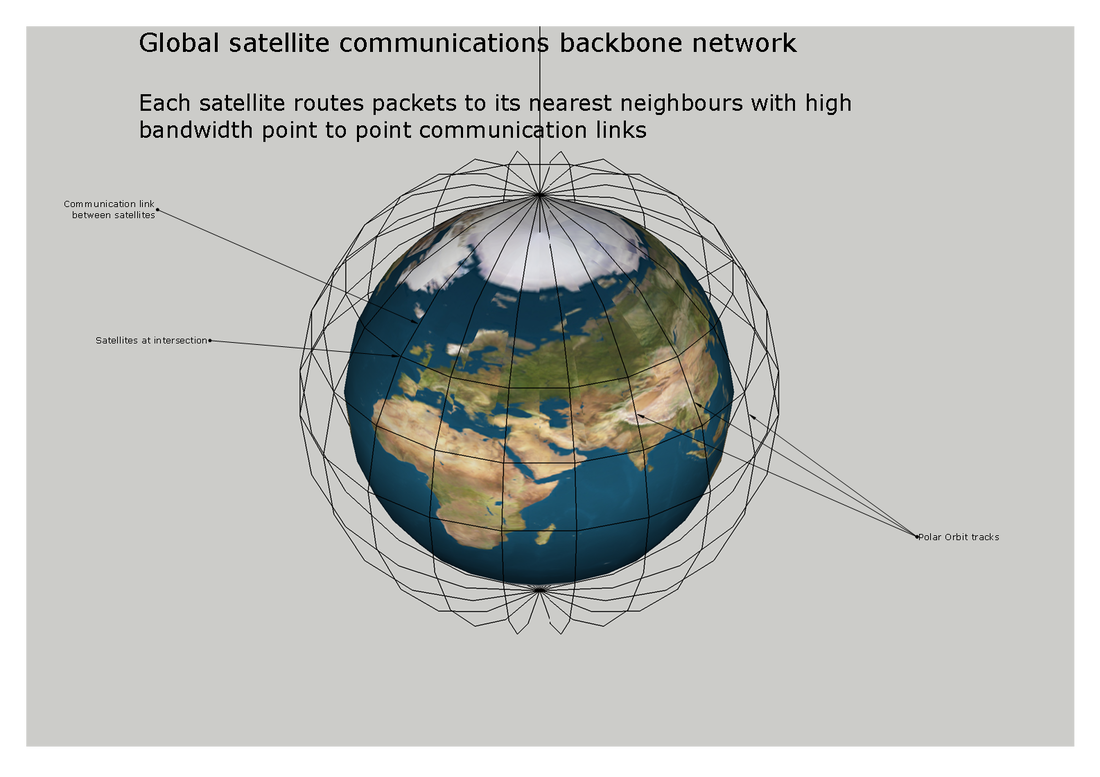A StratoSolar platform’s unique capability to enhance emerging satellite Internet communications9/29/2014 Google and Facebook have both publicly announced they plan to spend billions on satellite communications to bring internet access to the developing world. Recent departures from Google of key personnel associated with Google's satellite communications effort shed some light on the reality of what is happening at Google and elsewhere. These efforts are very real and have implications far beyond internet access for the developing world.
Apparently a team that Google had hired from O3b including Greg Wyler, Brian Holz and David Bettinger have recently departed Google and are the founders of WorldVU a satellite internet start up aiming to launch 360 satellites into 800 km and 950 km polar orbits starting in 2019. WorldVU has the rights to 2 GHz of KU band (12-18 GHz). Satellites will fly in 20 planes each with 18 satellites providing complete world internet coverage. Also, Michael Tseytlin, another satellite executive previously at Google recently joined Facebook’s connectivity lab. This article implies he has some authority. While these departures imply some confusion at Google, their recent purchase of Skybox means they now have in house capability to design and deploy satellites. Skybox has made and launched small satellites for imaging. This has obvious tie ins with lots of Google mapping and geographical information efforts but this expertise could also be leveraged for telecommunications. So it appears that there are three very serious efforts to launch low earth orbit constellations of satellites for internet communications. WorldVU, Google and Facebook are publicly each spending billions on their individual efforts and the movement of the key individuals mentioned previously backs up the reality of their statements. These are the early participants in what may turn into a new wild west in space as the broader implications of this emerging technology become apparent. Obvious examples of companies with both the financial resources and business need to compete are Apple and Microsoft. The public focus of these efforts at the moment is on the satellite to ground links that provides Internet access to the developing world, but the implications of the technology are potentially far more significant than that. The point to point communication links between satellites together form a private, high bandwidth, global, secure, reliable, backbone communications network that is independent of any nation. Based on free space optical (FSO) links and/or high frequency point to point microwave links the bandwidth of this backbone in space could eventually surpass that of the terrestrial internet backbone. Nations can control communications from the satellites to the ground but not point to point communication between satellites. Discussions of satellite communication for the developing world usually focuses on the customer end but an equally important aspect is the backhaul communications to the internet backbone. Backhaul relies on high bandwidth wireless communication between satellites and complex ground stations connected to the Internet backbone. This communication needs expensive, scarce and highly regulated bandwidth and expensive and complex ground stations. This is where StratoSolar platforms can offer a unique capability not possible with Loon, drones or High Altitude Airships. Because they are above most of the atmosphere, the same (unregulated) free space optical (FSO) links or high frequency microwave links used to communicate between satellites can communicate reliably with a receiver on a StratoSolar platform that then forwards the communications down high bandwidth fiber optic links attached to the tether. The tether is a unique attribute of StratoSolar platforms that is usually seen as a negative, but for this application it is a big positive. This connects the backbone in space directly to terrestrial backbone networks with the same private, high bandwidth, secure, reliable, communications. StratoSolar platforms can be situated near convenient connection points to the backbone or data centers. When thought of as data center connections, the ability of the platforms to also provide reliable 24/7/365 power to the data centers would allow more flexibility in data center location and less dependence on external energy infrastructure or logistics like fuel supply. This vision of an internet backbone in space seems an entirely plausible consequence of the coming low earth orbit satellite networks and the unique capabilities of the StratoSolar platform and its tether would make the case even stronger. By Edmund Kelly
Comments
|
Archives
December 2023
Categories
All
|
|
© 2024 StratoSolar Inc. All rights reserved.
|
Contact Us
|


 RSS Feed
RSS Feed